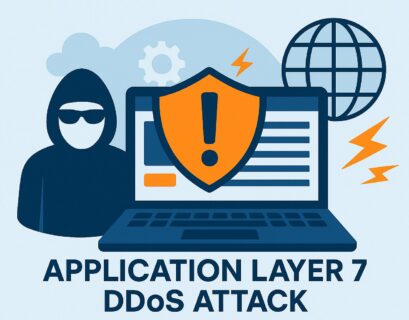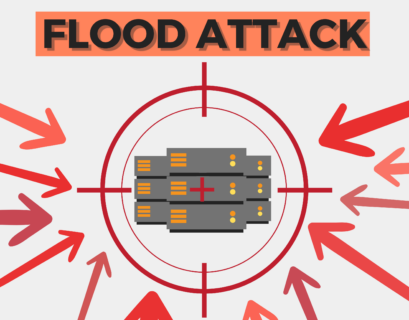Network monitoring is an essential practice in modern IT infrastructure management, ensuring the seamless operation, security, and performance of computer networks. This comprehensive solution involves continuous surveillance, analysis, and proactive management of network components using specialized tools. By swiftly detecting and addressing issues before they escalate, network monitoring forms the cornerstone of robust network management strategies, safeguarding against downtime, security breaches, and inefficiencies.
Table of Contents
What is Network Monitoring?
Network monitoring refers to the continuous observation of a computer network for any issues or failures to ensure the network’s optimal performance. It involves the use of specialized management software tools to identify, diagnose, and report issues related to connectivity, traffic, and usage patterns. By keeping a constant watch on network components, such as routers, firewalls, servers, and switches, network monitoring aims to address problems before they escalate into serious disruptions.
The Importance of Network Monitoring Solutions
The significance of network monitoring cannot be overstated in an era where downtime or network inefficiencies can lead to substantial financial losses, reduced productivity, and compromised security. Monitoring solutions provide a proactive approach to network management, allowing IT teams to detect irregularities, analyze performance trends, and ensure the security of networked systems. Whether it’s preventing data breaches, optimizing resource allocation, or ensuring uninterrupted service delivery, network monitoring forms the foundation of a robust IT infrastructure.
Monitoring solution by ClouDNS
Monitoring Different Types of Networks and Devices
Networks are as diverse as the organizations that use them, ranging from local area networks (LANs) within a single building to wide area networks (WANs) connecting locations across the globe. Moreover, the advent of wireless networks (WLANs), virtual private networks (VPNs), and cloud-based networks has expanded the monitoring landscape. Each network type, along with its associated devices, presents unique challenges and requirements for monitoring.
Network Functionality
The primary function of any network is to facilitate the transfer of data between devices, ensuring efficient, secure, and reliable communication. Network functionality has several key aspects:
- Connectivity: Ensuring that all parts of the network can communicate with each other.
- Performance: Monitoring bandwidth utilization, latency, and throughput to optimize speed and efficiency.
- Security: Identifying vulnerabilities and unauthorized access to protect data and network resources.
- Availability: Guaranteeing that network services are accessible to users when needed.
Common Network Devices to Monitor
Monitoring a network effectively means keeping an eye on the health and performance of its critical components:
- Routers and Switches: These devices direct traffic within the network and to external networks. Monitoring them helps in identifying bottlenecks, configuration issues, and hardware failures.
- Firewalls: As the gatekeepers of the network, firewalls control incoming and outgoing traffic based on an organization’s security policies. Monitoring firewalls is crucial for security management.
- Servers: Whether it’s web, email, or application servers, their performance directly impacts the services they support. Monitoring their CPU, memory usage, and disk space is essential.
- Wireless Controllers and Access Points: In WLANs, these devices manage wireless communications. Monitoring them ensures optimal signal strength and security.
- Endpoints: Including workstations, laptops, and mobile devices, endpoints are the user access points to the network. Monitoring them can help in managing software updates and detecting malware infections.
Experience Industry-Leading DNS Speed with ClouDNS!
Ready for ultra-fast DNS service? Click to register and see the difference!
Types of Network Monitoring Metrics
Effective network monitoring hinges on measuring the right metrics to assess network health accurately. Some of the key metrics include:
- Bandwidth Usage: The amount of data transmitted over a network at any given time.
- Latency: It is the delay in the amount of time the data packet takes to reach its destination across a network.
- Packet Loss: The percentage of packets that are sent but not received by the intended destination.
- Error Rates: The number of corrupted packets over time.
- Uptime/Downtime: The time a network or device is fully operational versus non-operational.
Types of Network Protocols
Network protocols are standardized rules that dictate how data is transmitted and received across a network. Monitoring these protocols helps ensure data is being transmitted securely and efficiently. Here’s a brief overview of some fundamental protocols:
- TCP: Transmission Control Protocol ensures the reliable, ordered, and error-checked delivery of data between applications. Implementing TCP monitoring guarantees optimal performance at all times.
- FTP: File Transfer Protocol is used to transfer files between a client and a server on a network.
- UDP: User Datagram Protocol enables the exchange of messages by prioritizing speed but without guaranteeing delivery. Therefore, UDP monitoring is crucial.
- SNMP: Simple Network Management Protocol manages and monitors network devices and their functions.
Suggested: What is SNMP Vulnerability? - SMTP: Simple Mail Transport Protocol is responsible for sending emails across networks.
- HTTP and HTTPS: Hypertext Transfer Protocol and Hypertext Transfer Protocol Secure are the foundation of data communication on the World Wide Web, with HTTPS offering an encrypted connection. HTTP/HTTPS monitoring is essential for any website or service.
- IP: Internet Protocol Directs packets of data from source to destination, assigning unique addresses to devices.
TCP Monitoring vs. UDP Monitoring
How does Network Monitoring work?
Network monitoring systems are equipped with a suite of capabilities designed to ensure comprehensive oversight of network operations. The primary functions can be broadly categorized into the following:
- Discover: The first step in effective network monitoring is the automatic discovery of devices within the network. This process involves identifying all the devices connected to the network, including routers, switches, servers, and endpoints. Discovery helps in creating an inventory of network assets, which is essential for subsequent monitoring activities.
- Map: After discovery, network monitoring systems generate a visual map or topology of the network. This map provides IT administrators with a graphical overview of how devices are interconnected, including the layout of subnets and the relationships between devices. Mapping aids in understanding the network structure, facilitating easier troubleshooting and management.
- Monitor: The core function of network monitoring systems is the continuous surveillance of network and device performance. This includes tracking bandwidth usage, latency, error rates, and other critical metrics. Monitoring ensures that IT teams are immediately aware of any issues that could impact network functionality or performance.
- Alert: Proactive issue resolution is a key benefit of network monitoring. The system automatically generates alerts based on predefined thresholds for various metrics. If a device fails, traffic spikes suddenly, or performance degrades, the system sends notifications to administrators. This allows for swift action to mitigate issues before they affect users or critical business operations.
- Report: Comprehensive reporting capabilities enable IT teams to analyze historical data, identify trends, and make informed decisions regarding network management. Reports can cover various aspects, such as device performance over time, incidents and resolutions, and network usage patterns. Reporting provides valuable insights for planning network upgrades, optimizing resources, and improving security.
Key Benefits of Network Monitoring Solutions
Implementing a network monitoring solution brings numerous advantages to an organization:
- Minimized Downtime: Rapid identification and resolution of network issues keep services running smoothly.
- Enhanced Security: Monitoring for unusual activity helps in detecting potential security threats early.
- Optimized Performance: Insights into network usage and bottlenecks allow for better resource allocation and performance tuning.
- Compliance and Documentation: Detailed reports support compliance with industry regulations and serve as documentation for IT audits.
- Improved User Satisfaction: A stable and efficient network enhances the experience for both internal users and external customers.
Primary Use Cases for Network Monitoring
Network monitoring plays a vital role across various scenarios:
- Data Centers: For data centers where reliability and uptime are critical, network monitoring ensures that connectivity issues, server failures, or security breaches are addressed promptly.
- Cloud: In cloud computing environments, monitoring extends to virtual networks and services, providing visibility into cloud resource usage, performance, and security.
- Containers: As containerized applications become more popular, monitoring solutions adapt to oversee container platforms, ensuring that applications remain available and perform smoothly.
Network Monitoring Best Practices
Implementing network monitoring effectively requires a strategic approach to ensure optimal performance, security, and reliability. Here are key best practices to follow:
- Define Clear Monitoring Goals: Establish specific goals, such as reducing downtime, optimizing bandwidth, or improving security. A structured approach ensures your monitoring efforts align with business needs.
- Monitor Critical Network Components: Prioritize monitoring of essential devices like routers, switches, firewalls, and servers. Keep an eye on endpoints, IoT devices, and cloud resources to maintain full visibility.
- Set Up Automated Alerts: Configure real-time alerts for abnormal behavior, such as traffic spikes, latency issues, or security breaches. Early warnings help IT teams prevent small issues from becoming major disruptions.
- Use a Combination of Monitoring Techniques: Leverage active monitoring (sending test data packets) for performance evaluation and passive monitoring (analyzing live network traffic) for real-time insights.
- Analyze Trends and Historical Data: Review past performance metrics to identify patterns, optimize resources, and predict potential failures before they impact operations.
- Ensure Regular Updates and Security Patches: Keep network monitoring tools, firewalls, and hardware firmware updated to prevent security vulnerabilities and ensure optimal functionality.
- Implement Redundancy and Failover Mechanisms: Ensure high availability by configuring redundant network paths and backup systems to prevent outages.
By following these best practices, organizations can enhance network stability, security, and overall operational efficiency.
Conclusion
Network monitoring is a fundamental tool in the IT arsenal, vital for maintaining the integrity, performance, and security of modern digital networks. By implementing a robust monitoring solution, organizations can not only predict and resolve potential issues but also optimize their networks for future demands. As networks continue to evolve in complexity and scale, the role of network monitoring will only grow in importance, ensuring that businesses can continue to rely on their digital infrastructure for success.






